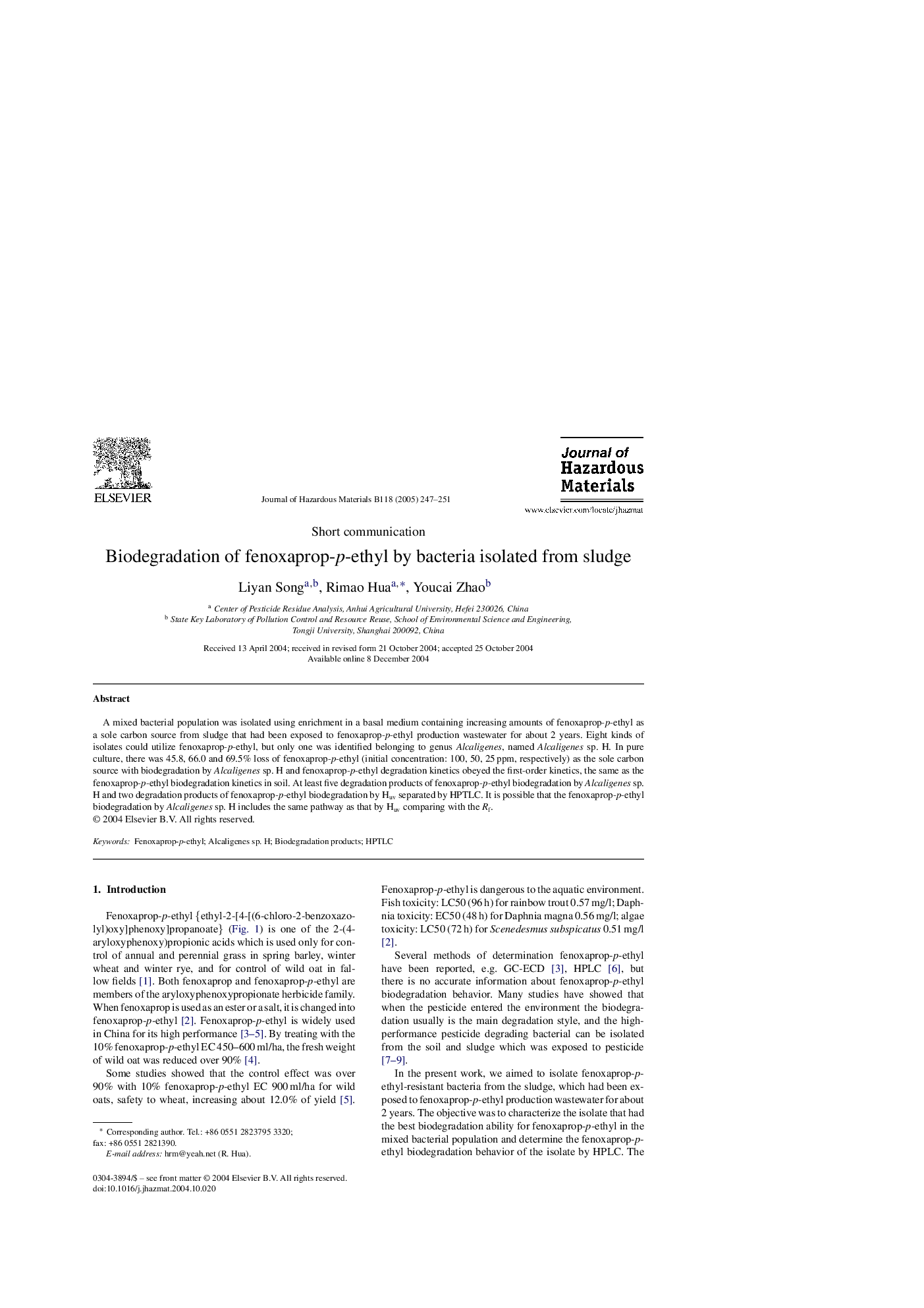| Article ID | Journal | Published Year | Pages | File Type |
|---|---|---|---|---|
| 9674405 | Journal of Hazardous Materials | 2005 | 5 Pages |
Abstract
A mixed bacterial population was isolated using enrichment in a basal medium containing increasing amounts of fenoxaprop-p-ethyl as a sole carbon source from sludge that had been exposed to fenoxaprop-p-ethyl production wastewater for about 2 years. Eight kinds of isolates could utilize fenoxaprop-p-ethyl, but only one was identified belonging to genus Alcaligenes, named Alcaligenes sp. H. In pure culture, there was 45.8, 66.0 and 69.5% loss of fenoxaprop-p-ethyl (initial concentration: 100, 50, 25Â ppm, respectively) as the sole carbon source with biodegradation by Alcaligenes sp. H and fenoxaprop-p-ethyl degradation kinetics obeyed the first-order kinetics, the same as the fenoxaprop-p-ethyl biodegradation kinetics in soil. At least five degradation products of fenoxaprop-p-ethyl biodegradation by Alcaligenes sp. H and two degradation products of fenoxaprop-p-ethyl biodegradation by Huv separated by HPTLC. It is possible that the fenoxaprop-p-ethyl biodegradation by Alcaligenes sp. H includes the same pathway as that by Huv comparing with the Rf.
Keywords
Related Topics
Physical Sciences and Engineering
Chemical Engineering
Chemical Health and Safety
Authors
Liyan Song, Rimao Hua, Youcai Zhao,
